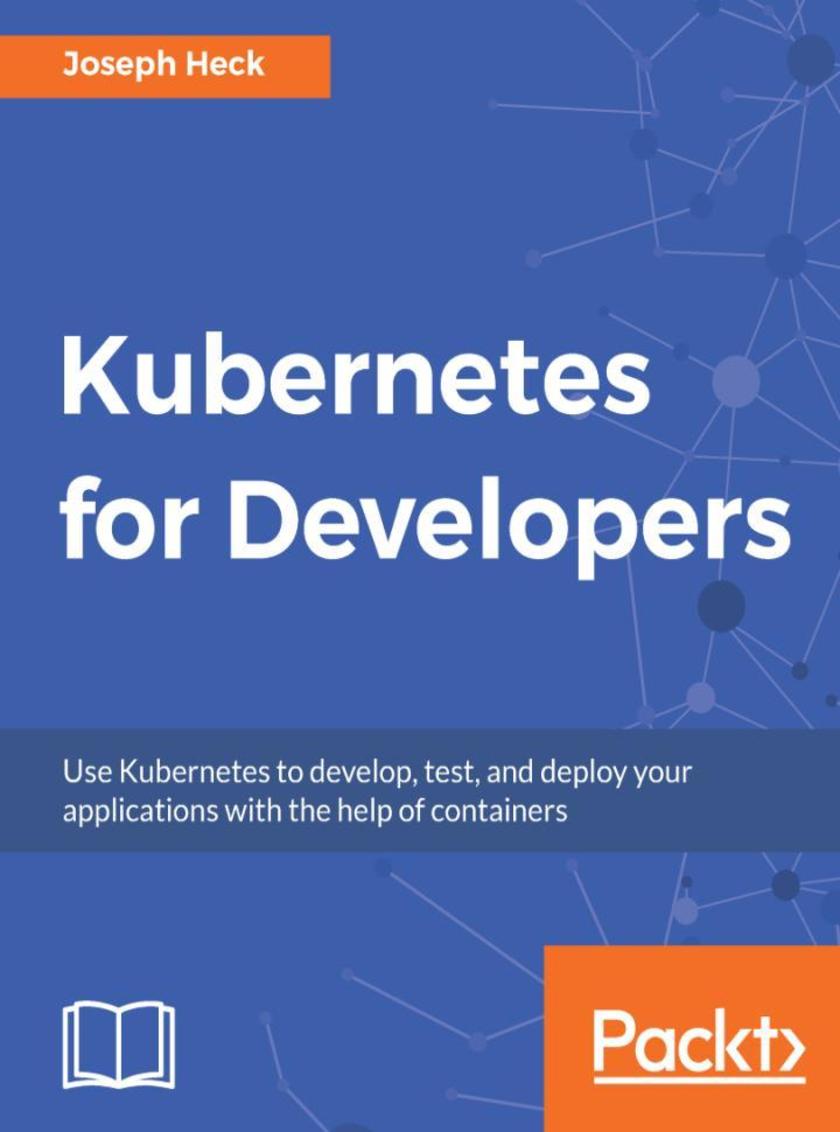
Kubernetes for Developers
¥81.74
A developer's field-guide to designing scalable services using Kubernetes About This Book ? Develop and run your software using containers within a Kubernetes environment ? Get hands-on experience of using Kubernetes with DevOps concepts such as continuous integration, benchmark testing, monitoring, and so on ? Pragmatic example-based approach showing how to use Kubernetes in the development process Who This Book Is For If you are a full-stack or back-end software developers interested, curious, or being asked to test as well as run the code you're creating, you can leverage Kubernetes to make that process simpler and consistent regardless of where you deploy. If you're looking for developer focused examples in NodeJS and Python for how to build, test, deploy, and run your code with Kubernetes, this is perfect for you. What You Will Learn ? Build your software into containers ? Deploy and debug software running in containers within Kubernetes ? Declare and add configuration through Kubernetes ? Define how your application fits together, using internal and external services ? Add feedback to your code to help Kubernetes manage your services ? Monitor and measure your services through integration testing and in production deployments In Detail Kubernetes is documented and typically approached from the perspective of someone running software that has already been built. Kubernetes may also be used to enhance the development process, enabling more consistent testing and analysis of code to help developers verify not only its correctness, but also its efficiency. This book introduces key Kubernetes concepts, coupled with examples of how to deploy and use them with a bit of Node.js and Python example code, so that you can quickly replicate and use that knowledge. You will begin by setting up Kubernetes to help you develop and package your code. We walk you through the setup and installation process before working with Kubernetes in the development environment. We then delve into concepts such as automating your build process, autonomic computing, debugging, and integration testing. This book covers all the concepts required for a developer to work with Kubernetes. By the end of this book, you will be in a position to use Kubernetes in development ecosystems. Style and approach This book will cover examples using NodeJS and Python that walk you through building containers, defining your deployments, deploying, debugging, testing, and generally interacting with your code running on Kubernetes. The examples are focused on common development needs, and include pragmatic advice and the explanations behind that advice.
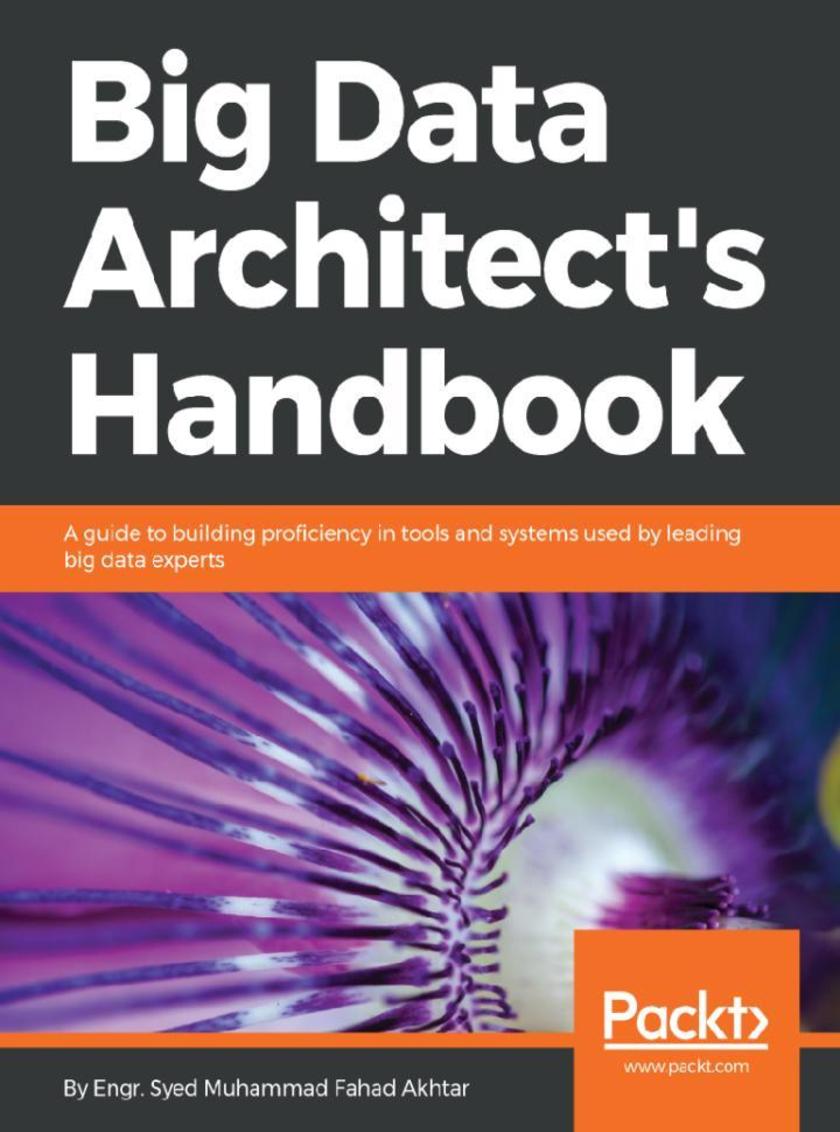
Big Data Architect’s Handbook
¥90.46
A comprehensive end-to-end guide that gives hands-on practice in big data and Artificial Intelligence About This Book ? Learn to build and run a big data application with sample code ? Explore examples to implement activities that a big data architect performs ? Use Machine Learning and AI for structured and unstructured data Who This Book Is For Big Data Architect’s Handbook is for you if you are an aspiring data professional, developer, or IT enthusiast who aims to be an all-round architect in big data. This book is your one-stop solution to enhance your knowledge and carry out easy to complex activities required to become a big data architect. What You Will Learn ? Learn Hadoop Ecosystem and Apache projects ? Understand, compare NoSQL database and essential software architecture ? Cloud infrastructure design considerations for big data ? Explore application scenario of big data tools for daily activities ? Learn to analyze and visualize results to uncover valuable insights ? Build and run a big data application with sample code from end to end ? Apply Machine Learning and AI to perform big data intelligence ? Practice the daily activities performed by big data architects In Detail The big data architects are the “masters” of data, and hold high value in today’s market. Handling big data, be it of good or bad quality, is not an easy task. The prime job for any big data architect is to build an end-to-end big data solution that integrates data from different sources and analyzes it to find useful, hidden insights. Big Data Architect’s Handbook takes you through developing a complete, end-to-end big data pipeline, which will lay the foundation for you and provide the necessary knowledge required to be an architect in big data. Right from understanding the design considerations to implementing a solid, efficient, and scalable data pipeline, this book walks you through all the essential aspects of big data. It also gives you an overview of how you can leverage the power of various big data tools such as Apache Hadoop and ElasticSearch in order to bring them together and build an efficient big data solution. By the end of this book, you will be able to build your own design system which integrates, maintains, visualizes, and monitors your data. In addition, you will have a smooth design flow in each process, putting insights in action. Style and approach Comprehensive guide with a perfect blend of theory, examples and implementation of real-world use-cases
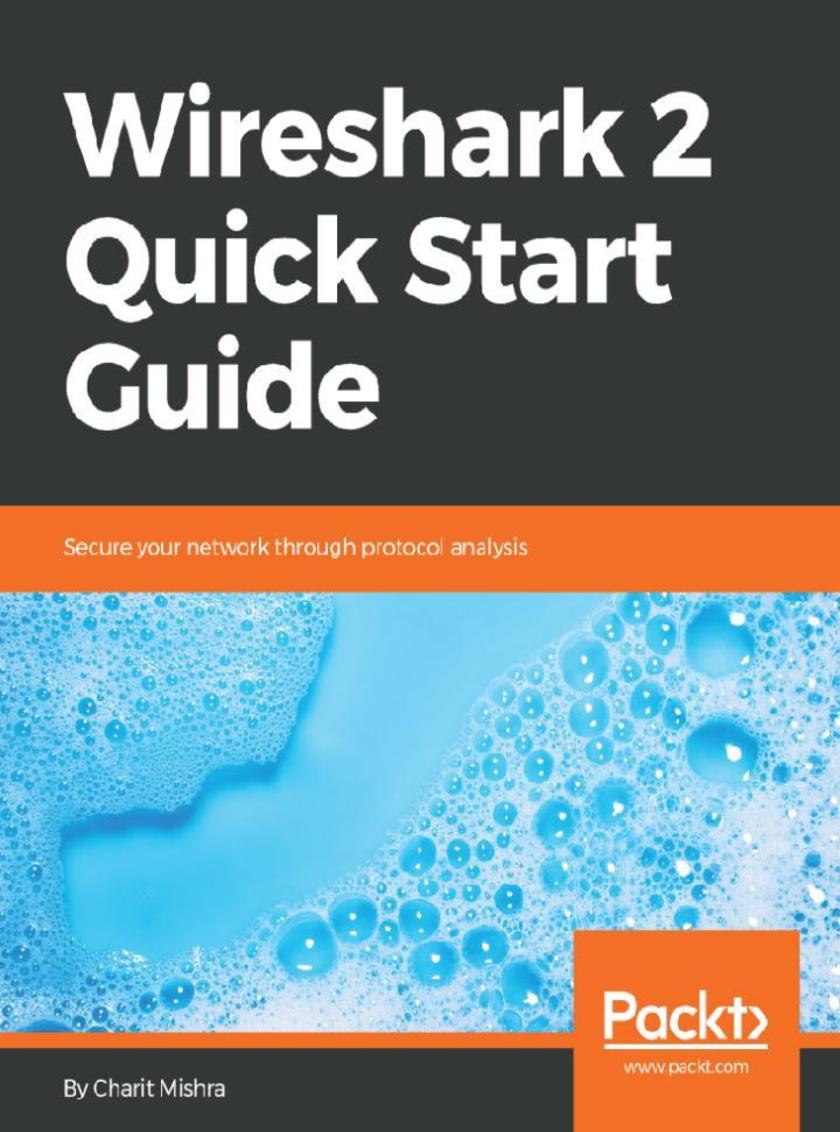
Wireshark 2 Quick Start Guide
¥50.13
Protect your network as you move from the basics of the Wireshark scenarios to detecting and resolving network anomalies. About This Book ? Learn protocol analysis, optimization and troubleshooting using Wireshark, an open source tool ? Learn the usage of filtering and statistical tools to ease your troubleshooting job ? Quickly perform root-cause analysis over your network in an event of network failure or a security breach Who This Book Is For If you are a security professional or a network enthusiast who is interested in understanding the internal working of networks and packets, then this book is for you. No prior knowledge of Wireshark is needed. What You Will Learn ? Learn how TCP/IP works? ? Install Wireshark and understand its GUI ? Creation and Usage of Filters to ease analysis process ? Understand the usual and unusual behaviour of Protocols ? Troubleshoot network anomalies quickly with help of Wireshark ? Use Wireshark as a diagnostic tool for network security analysis to identify source of malware ? Decrypting wireless traffic ? Resolve latencies and bottleneck issues in the network In Detail Wireshark is an open source protocol analyser, commonly used among the network and security professionals. Currently being developed and maintained by volunteer contributions of networking experts from all over the globe. Wireshark is mainly used to analyze network traffic, analyse network issues, analyse protocol behaviour, etc. - it lets you see what's going on in your network at a granular level. This book takes you from the basics of the Wireshark environment to detecting and resolving network anomalies. This book will start from the basics of setting up your Wireshark environment and will walk you through the fundamentals of networking and packet analysis. As you make your way through the chapters, you will discover different ways to analyse network traffic through creation and usage of filters and statistical features. You will look at network security packet analysis, command-line utilities, and other advanced tools that will come in handy when working with day-to-day network operations. By the end of this book, you have enough skill with Wireshark 2 to overcome real-world network challenges. Style and approach Learn and practice the skills of protocol and network analysis using the tool of the pros, Wireshark.
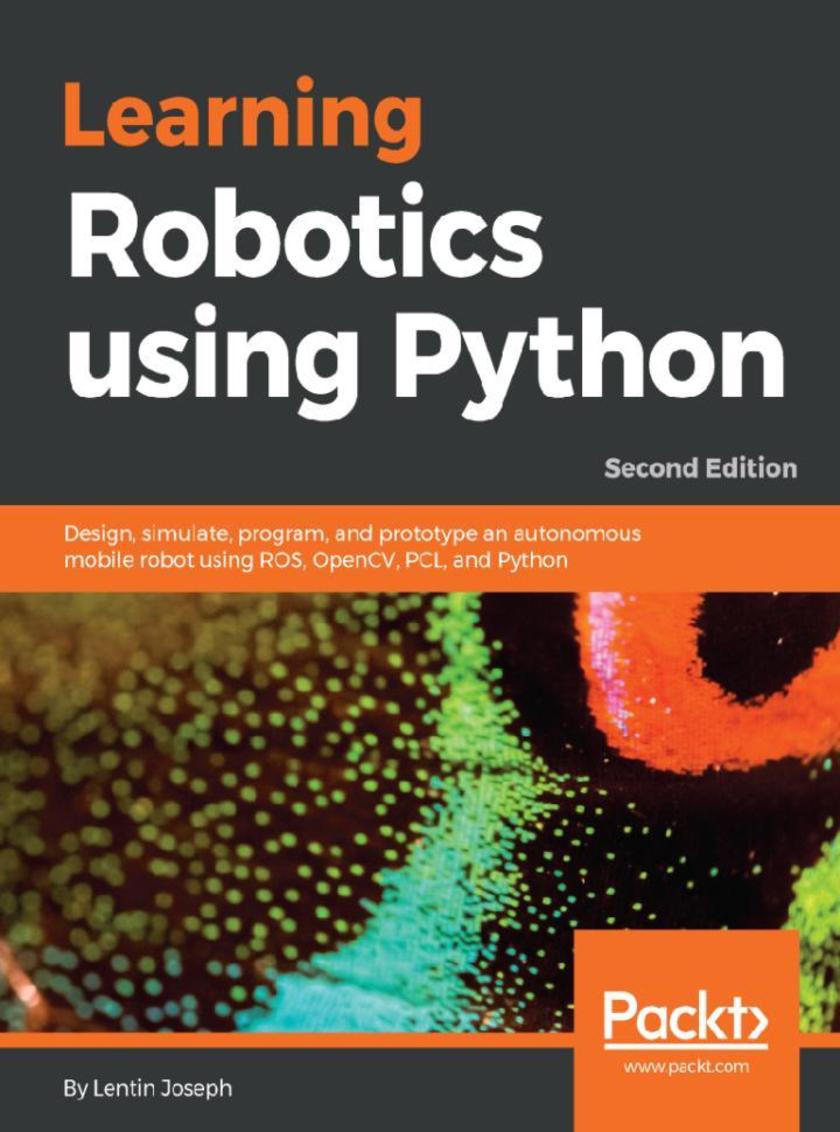
Learning Robotics using Python
¥57.76
Design, simulate, and program interactive robots About This Book ? Design, simulate, build, and program an interactive autonomous mobile robot ? Leverage the power of ROS, Gazebo, and Python to enhance your robotic skills ? A hands-on guide to creating an autonomous mobile robot with the help of ROS and Python Who This Book Is For This book is for those who are conducting research in mobile robotics and autonomous navigation. As well as the robotics research domain, this book is also for the robot hobbyist community. You’re expected to have a basic understanding of Linux commands and Python. What You Will Learn ? Design a differential robot from scratch ? Model a differential robot using ROS and URDF ? Simulate a differential robot using ROS and Gazebo ? Design robot hardware electronics ? Interface robot actuators with embedded boards ? Explore the interfacing of different 3D depth cameras in ROS ? Implement autonomous navigation in ChefBot ? Create a GUI for robot control In Detail Robot Operating System (ROS) is one of the most popular robotics software frameworks in research and industry. It has various features for implementing different capabilities in a robot without implementing them from scratch. This book starts by showing you the fundamentals of ROS so you understand the basics of differential robots. Then, you'll learn about robot modeling and how to design and simulate it using ROS. Moving on, we'll design robot hardware and interfacing actuators. Then, you'll learn to configure and program depth sensors and LIDARs using ROS. Finally, you'll create a GUI for your robot using the Qt framework. By the end of this tutorial, you'll have a clear idea of how to integrate and assemble everything into a robot and how to bundle the software package. Style and approach A step-by-step guide which will help you to create an autonomous mobile robot with the help of ROS and Python. It will help you to understand and implement the fundamental concepts of differential robots and teach you to create differential robot’s simulation using Gazebo.
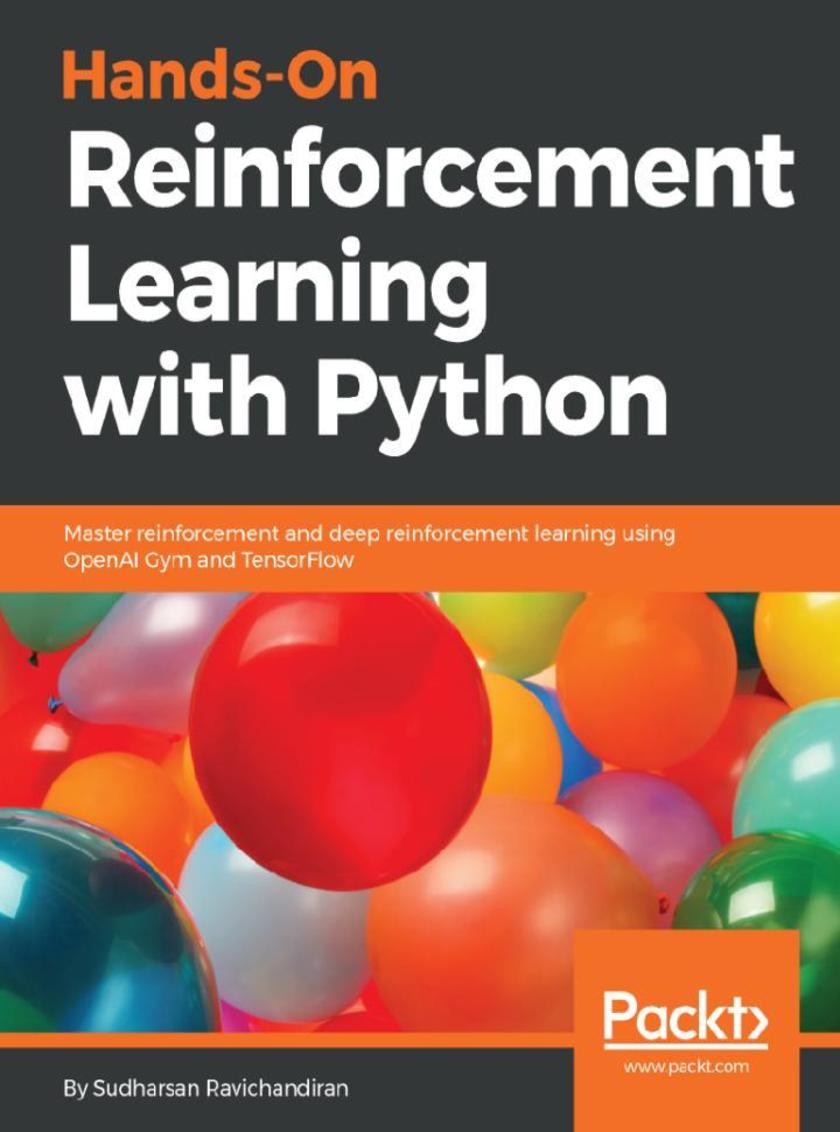
Hands-On Reinforcement Learning with Python
¥63.21
A hands-on guide enriched with examples to master deep reinforcement learning algorithms with Python About This Book ? Your entry point into the world of artificial intelligence using the power of Python ? An example-rich guide to master various RL and DRL algorithms ? Explore various state-of-the-art architectures along with math Who This Book Is For If you’re a machine learning developer or deep learning enthusiast interested in artificial intelligence and want to learn about reinforcement learning from scratch, this book is for you. Some knowledge of linear algebra, calculus, and the Python programming language will help you understand the concepts covered in this book. What You Will Learn ? Understand the basics of reinforcement learning methods, algorithms, and elements ? Train an agent to walk using OpenAI Gym and Tensorflow ? Understand the Markov Decision Process, Bellman’s optimality, and TD learning ? Solve multi-armed-bandit problems using various algorithms ? Master deep learning algorithms, such as RNN, LSTM, and CNN with applications ? Build intelligent agents using the DRQN algorithm to play the Doom game ? Teach agents to play the Lunar Lander game using DDPG ? Train an agent to win a car racing game using dueling DQN In Detail Reinforcement Learning (RL) is the trending and most promising branch of artificial intelligence. Hands-On Reinforcement learning with Python will help you master not only the basic reinforcement learning algorithms but also the advanced deep reinforcement learning algorithms. The book starts with an introduction to Reinforcement Learning followed by OpenAI Gym, and TensorFlow. You will then explore various RL algorithms and concepts, such as Markov Decision Process, Monte Carlo methods, and dynamic programming, including value and policy iteration. This example-rich guide will introduce you to deep reinforcement learning algorithms, such as Dueling DQN, DRQN, A3C, PPO, and TRPO. You will also learn about imagination-augmented agents, learning from human preference, DQfD, HER, and many more of the recent advancements in reinforcement learning. By the end of the book, you will have all the knowledge and experience needed to implement reinforcement learning and deep reinforcement learning in your projects, and you will be all set to enter the world of artificial intelligence. Style and approach This is a hands-on book designed to further expand your machine learning skills by understanding reinforcement to deep reinforcement learning algorithms with applications in Python.
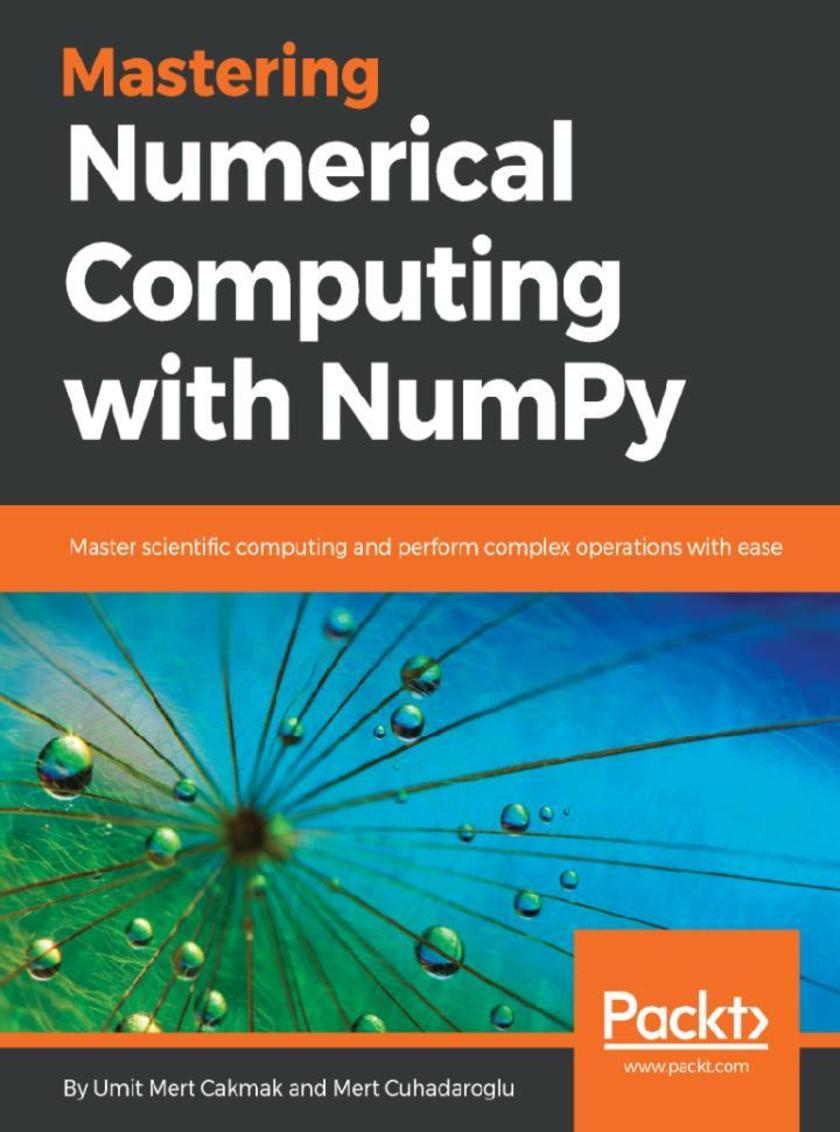
Mastering Numerical Computing with NumPy
¥63.21
Enhance the power of NumPy and start boosting your scientific computing capabilities About This Book ? Grasp all aspects of numerical computing and understand NumPy ? Explore examples to learn exploratory data analysis (EDA), regression, and clustering ? Access NumPy libraries and use performance benchmarking to select the right tool Who This Book Is For Mastering Numerical Computing with NumPy is for you if you are a Python programmer, data analyst, data engineer, or a data science enthusiast, who wants to master the intricacies of NumPy and build solutions for your numeric and scientific computational problems. You are expected to have familiarity with mathematics to get the most out of this book. What You Will Learn ? Perform vector and matrix operations using NumPy ? Perform exploratory data analysis (EDA) on US housing data ? Develop a predictive model using simple and multiple linear regression ? Understand unsupervised learning and clustering algorithms with practical use cases ? Write better NumPy code and implement the algorithms from scratch ? Perform benchmark tests to choose the best configuration for your system In Detail NumPy is one of the most important scientific computing libraries available for Python. Mastering Numerical Computing with NumPy teaches you how to achieve expert level competency to perform complex operations, with in-depth coverage of advanced concepts. Beginning with NumPy's arrays and functions, you will familiarize yourself with linear algebra concepts to perform vector and matrix math operations. You will thoroughly understand and practice data processing, exploratory data analysis (EDA), and predictive modeling. You will then move on to working on practical examples which will teach you how to use NumPy statistics in order to explore US housing data and develop a predictive model using simple and multiple linear regression techniques. Once you have got to grips with the basics, you will explore unsupervised learning and clustering algorithms, followed by understanding how to write better NumPy code while keeping advanced considerations in mind. The book also demonstrates the use of different high-performance numerical computing libraries and their relationship with NumPy. You will study how to benchmark the performance of different configurations and choose the best for your system. By the end of this book, you will have become an expert in handling and performing complex data manipulations. Style and approach This mastering guide will help you master your skills required to perform a complex numerical computation. The book contains the right mixture of theory and practical examples that will help you in dealing with the advanced NumPy and build solutions for your numeric and scientific computational problems
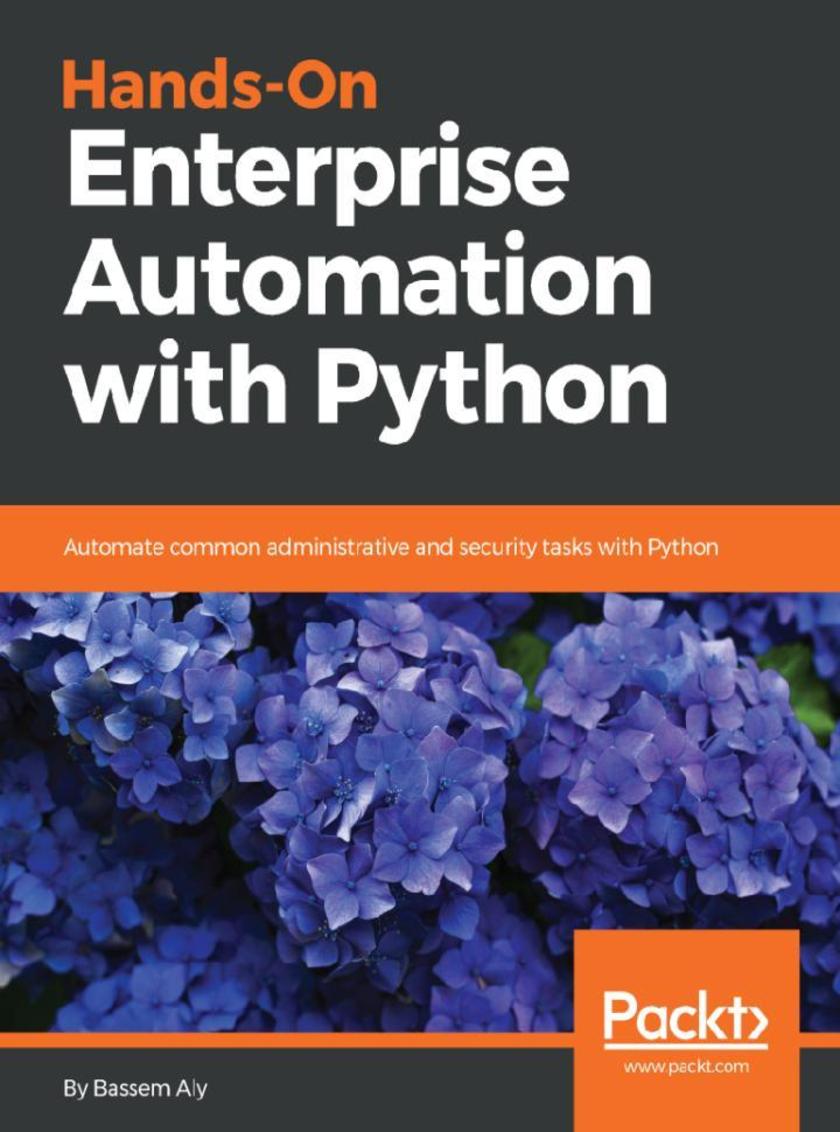
Hands-On Enterprise Automation with Python.
¥73.02
Invent your own Python scripts to automate your infrastructure About This Book ? Make the most of Python libraries and modules to automate your infrastructure ? Leverage Python programming to automate server configurations and administration tasks ? Efficiently develop your Python skill set Who This Book Is For Hands-On Enterprise Automation with Python is for system administrators and DevOps engineers who are looking for an alternative to major automation frameworks such as Puppet and Chef. Basic programming knowledge with Python and Linux shell scripting is necessary. What You Will Learn ? Understand common automation modules used in Python ? Develop Python scripts to manage network devices ? Automate common Linux administration tasks with Ansible and Fabric ? Managing Linux processes ? Administrate VMware, OpenStack, and AWS instances with Python ? Security automation and sharing code on GitHub In Detail Hands-On Enterprise Automation with Python starts by covering the set up of a Python environment to perform automation tasks, as well as the modules, libraries, and tools you will be using. We’ll explore examples of network automation tasks using simple Python programs and Ansible. Next, we will walk you through automating administration tasks with Python Fabric, where you will learn to perform server configuration and administration, along with system administration tasks such as user management, database management, and process management. As you progress through this book, you’ll automate several testing services with Python scripts and perform automation tasks on virtual machines and cloud infrastructure with Python. In the concluding chapters, you will cover Python-based offensive security tools and learn how to automate your security tasks. By the end of this book, you will have mastered the skills of automating several system administration tasks with Python. Style and approach This book will follow a practical approach to help you script and automate tasks using Python.
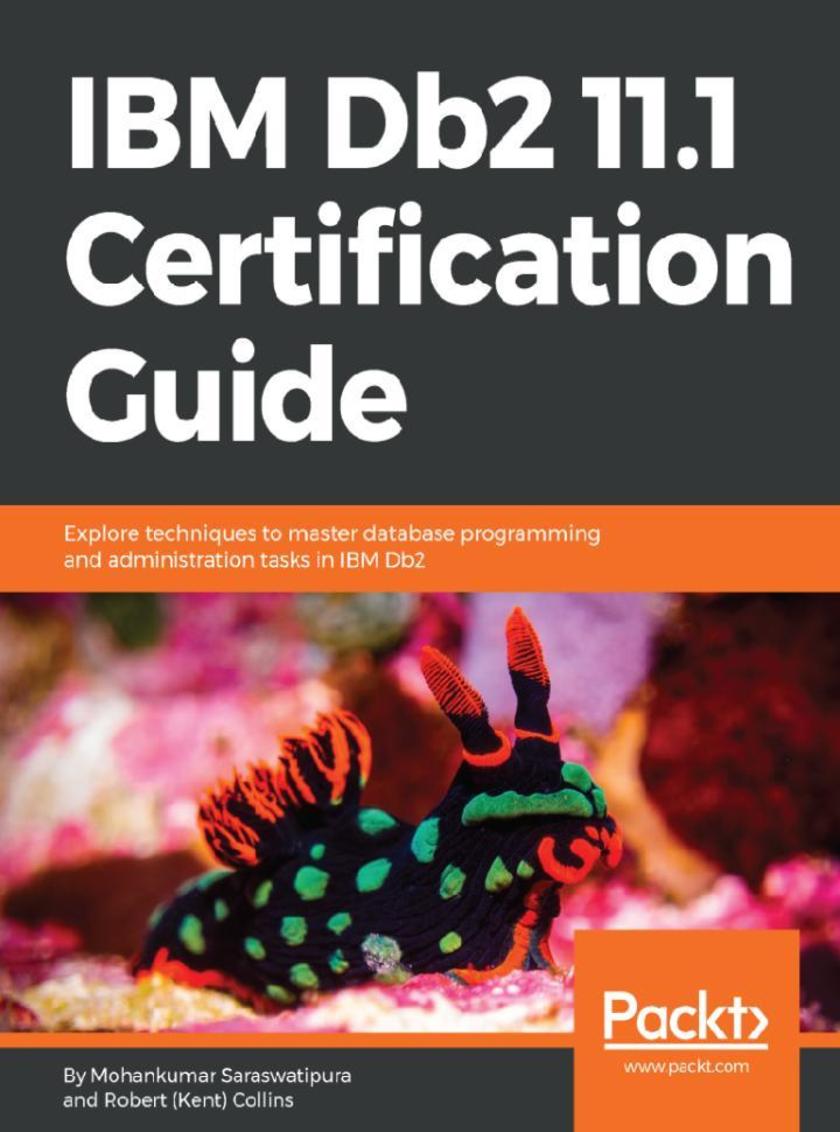
IBM Db2 11.1 Certification Guide
¥73.02
Mastering material for dealing with DBA certification exams About This Book ? Prepare yourself for the IBM C2090-600 certification exam ? Cover over 50 Db2 procedures including database design, performance, and security ? Work through over 150 Q&As to gain confidence on each topic Who This Book Is For The IBM Db2 11.1 Certification Guide is an excellent choice for database administrators, architects, and application developers who are keen to obtain certification in Db2. Basic understanding of Db2 is expected in order to get the most out of this guide. What You Will Learn ? Configure and manage Db2 servers, instances, and databases ? Implement Db2 BLU Acceleration and a DB2 pureScale environment ? Create, manage, and alter Db2 database objects ? Use the partitioning capabilities available within Db2 ? Enforce constraint checking with the SET INTEGRITY command ? Utilize the Db2 problem determination (db2pd) and dsmtop tools ? Configure and manage HADR ? Understand how to encrypt data in transit and at rest In Detail IBM Db2 is a relational database management system (RDBMS) that helps you store, analyze, and retrieve data efficiently. This comprehensive book is designed to help you master all aspects of IBM Db2 database administration and prepare you to take and pass IBM's Certification Exams C2090-600. Building on years of extensive experience, the authors take you through all areas covered by the test. The book delves deep into each certification topic: Db2 server management, physical design, business rules implementation, activity monitoring, utilities, high availability, and security. IBM Db2 11.1 Certification Guide provides you with more than 150 practice questions and answers, simulating real certification examination questions. Each chapter includes an extensive set of practice questions along with carefully explained answers. This book will not just prepare you for the C2090-600 exam but also help you troubleshoot day-to-day database administration challenges. Style and approach A comprehensive certification preparation guide for the C2090-600 exam, covering all the topics in greater detail and with sample questions and answers at the end of each chapter.
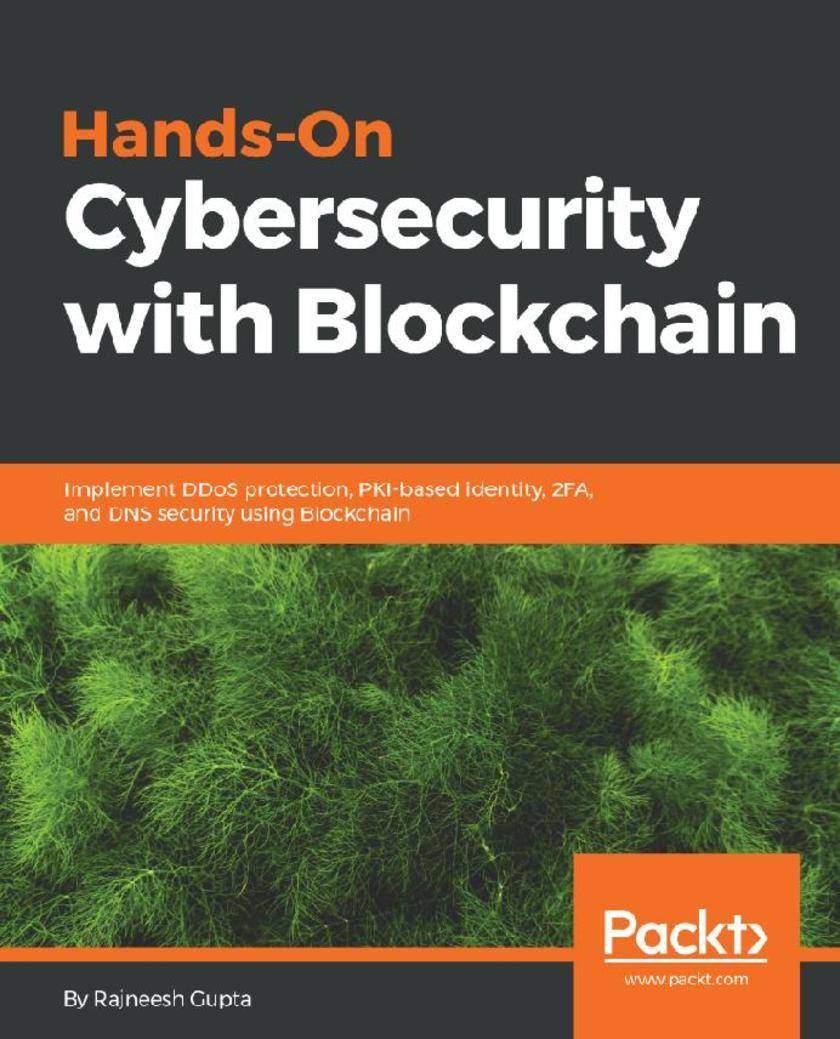
Hands-On Cybersecurity with Blockchain
¥81.74
Develop blockchain application with step-by-step instructions, working example and helpful recommendations About This Book ? Understanding the blockchain technology from the cybersecurity perspective ? Developing cyber security solutions with Ethereum blockchain technology ? Understanding real-world deployment of blockchain based applications Who This Book Is For The book is targeted towards security professionals, or any stakeholder dealing with cybersecurity who wants to understand the next-level of securing infrastructure using Blockchain. Basic understanding of Blockchain can be an added advantage. What You Will Learn ? Understand the cyberthreat landscape ? Learn about Ethereum and Hyperledger Blockchain ? Program Blockchain solutions ? Build Blockchain-based apps for 2FA, and DDoS protection ? Develop Blockchain-based PKI solutions and apps for storing DNS entries ? Challenges and the future of cybersecurity and Blockchain In Detail Blockchain technology is being welcomed as one of the most revolutionary and impactful innovations of today. Blockchain technology was first identified in the world’s most popular digital currency, Bitcoin, but has now changed the outlook of several organizations and empowered them to use it even for storage and transfer of value. This book will start by introducing you to the common cyberthreat landscape and common attacks such as malware, phishing, insider threats, and DDoS. The next set of chapters will help you to understand the workings of Blockchain technology, Ethereum and Hyperledger architecture and how they fit into the cybersecurity ecosystem. These chapters will also help you to write your first distributed application on Ethereum Blockchain and the Hyperledger Fabric framework. Later, you will learn about the security triad and its adaptation with Blockchain. The last set of chapters will take you through the core concepts of cybersecurity, such as DDoS protection, PKI-based identity, 2FA, and DNS security. You will learn how Blockchain plays a crucial role in transforming cybersecurity solutions. Toward the end of the book, you will also encounter some real-world deployment examples of Blockchain in security cases, and also understand the short-term challenges and future of cybersecurity with Blockchain. Style and approach This book will follow a practical approach to help understand blockchain technology to transform cybersecurity solutions
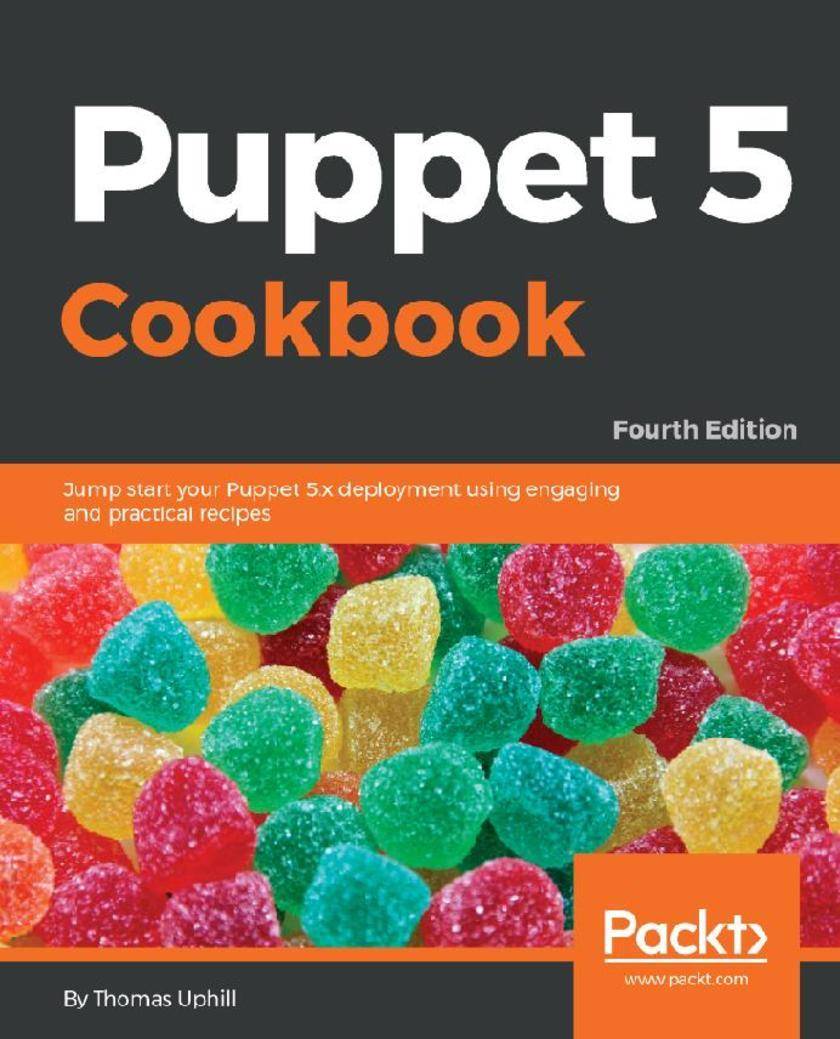
Puppet 5 Cookbook
¥81.74
Write custom plugins for Puppet, including facts, providers, and functions About This Book ? Grasp recipes that work with centralized and decentralized deployments ? Explore language differences and enhancements anticipated in Puppet version 5.x ? Gain expert understanding of Puppet's latest and most advanced features Who This Book Is For Puppet 5 Cookbook is for anyone who builds and administers servers, especially in a web operations context. You’ll need some experience of Linux systems administration, including familiarity with the command line, filesystem, and text editing. No prior programming experience is required. What You Will Learn ? Discover the latest and most advanced features of Puppet ? Bootstrap your Puppet installation using powerful tools like Rake ? Master techniques to deal with centralized and decentralized Puppet deployments ? Use exported resources and forge modules to set up Puppet modules ? Create efficient manifests to streamline your deployments ? Automate Puppet master deployment using Git hooks and PuppetDB ? Make Puppet reliable, performant, and scalable In Detail Puppet is a configuration management system that automates all your IT configurations, giving you control of managing each node.Puppet 5 Cookbook will take you through Puppet's latest and most advanced features, including Docker containers, Hiera, and AWS Cloud Orchestration. Updated with the latest advancements and best practices, this book delves into various aspects of writing good Puppet code, which includes using Puppet community style, checking your manifests with puppet-lint, and learning community best practices with an emphasis on real-world implementation. You will learn to set up, install, and create your first manifests with Puppet version control, and also understand various sysadmin tasks, including managing config files, using Augeas, and generating files from snippets and templates. As the book progresses, you’ll explore virtual resources and use Puppet's resource scheduling and auditing features. In the concluding chapters, you’ll walk through managing applications and writing your own resource types, providers, and external node classifiers. By the end of this book, you will have learned to report, log, and debug your system. Style and approach A recipe-based guide filled with quick step-by-step instructions that are immediately applicable
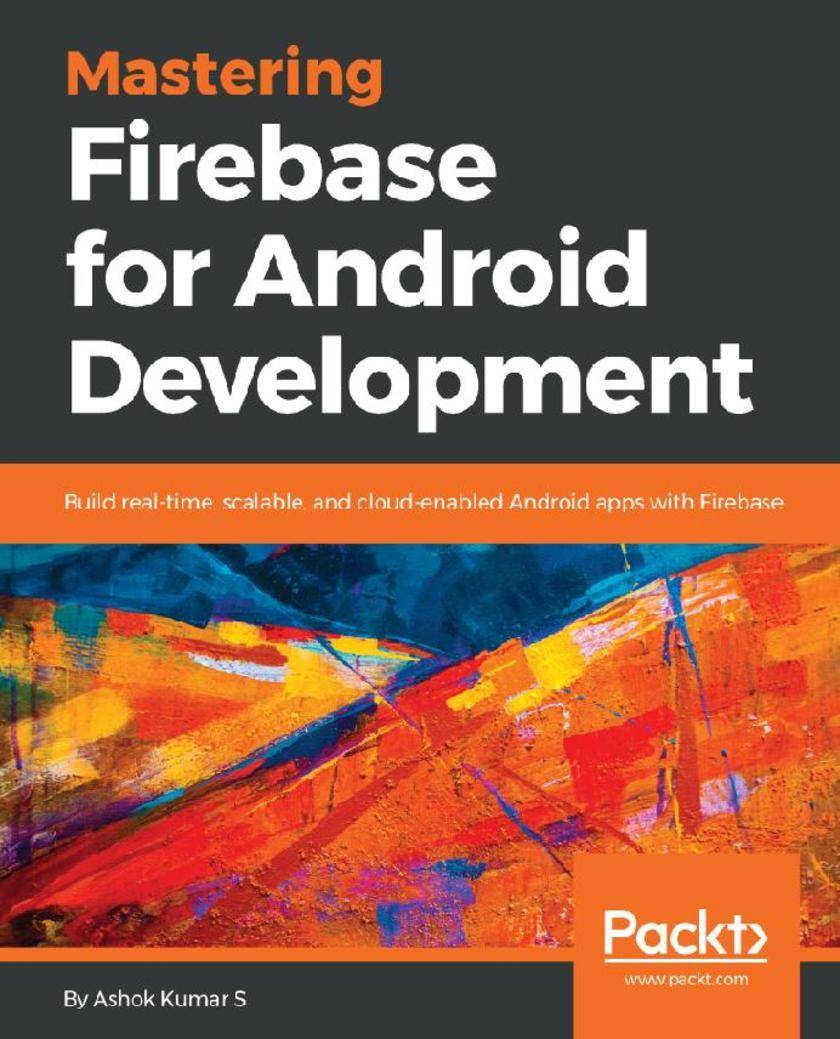
Mastering Firebase for Android Development
¥81.74
Develop a fully functional dynamic Android application using the latest features of Firebase About This Book ? Explore all the latest tools in Firebase—Firebase Firestore, ML-Kit, and Firebase Predictions ? Master Firebase cloud messaging, remote configuration, and work with a real-time database ? Make your app a global success with the help of Google Analytics and AdMob Who This Book Is For Mastering Firebase for Android Development is for individualslooking to extend their skills with Firebase and build faster, scalable, and real-time mobile applications. Basic understanding of Android programming is necessary. In all, this in-depth guide is an accessible pathway to mastering Firebase. What You Will Learn ? Learn about Firebase push notifications and write backend functionalities ? Identify the root cause of an application crash and diagnose and fix bugs ? Store different Multipurpose Internet MailExtension(MIME) type files ? Explore web hosting and connect the Firebase functions to the host website ? Send push notifications and understand the deep integration of analytics tools and cohorts ? Market and monetize your application using Firebase Adwords and Admob ? Build a secure authentication framework while enhancing the sign-in and on-boarding experience for end users In Detail Firebase offers a wide spectrum of tools and services to help you develop high-quality apps in a short period of time. It also allows you to build web and mobile apps quickly without managing the infrastructure.Mastering Firebase for Android Development takes you through the complete toolchain of Firebase,including the latest tools announced in Google IO 2018 such as Firebase ML-Kit, FireStore, and Firebase Predictions. The book begins by teaching you to configure your development environment with Firebase and set up a different structure for a Firebase real-time database. As you make your way through the chapters, you’ll establish the authentication feature in Android and explore email and phone authentication for managing the on-boarding of users. You’ll be taken through topics on Firebase crash reporting, Firebase functions, Firebase Cloud, Firebase Hosting, and Cloud Messaging for push notifications and explore other key areas in depth. In the concluding chapters, you will learn to use Firebase Test Lab to test your application before using Firebase Performance Monitoring to trace performance setbacks. By the end of the book, you will be well equipped with the Firebase ecosystem, which will help you find solutions to your common application development challenges. Style and approach A step by step guide taking you through the different features of Firebase
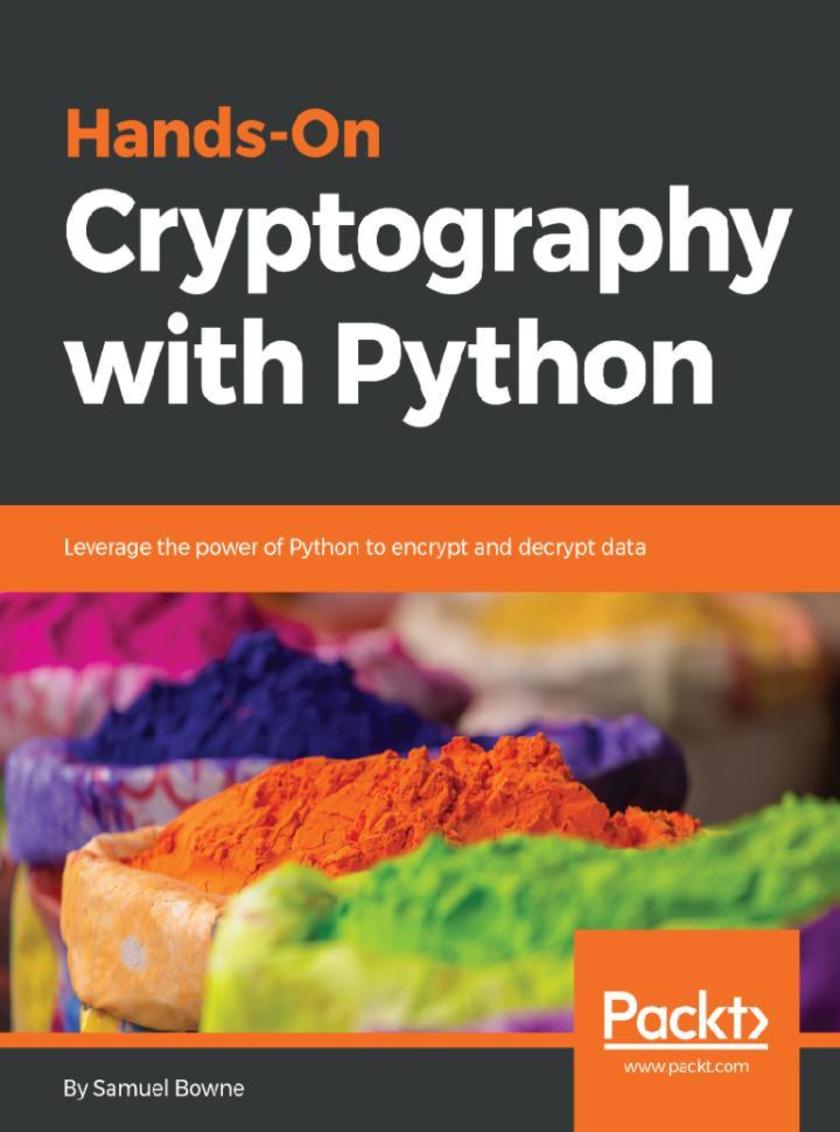
Hands-On Cryptography with Python
¥54.49
Learn to evaluate and compare data encryption methods and attack cryptographic systems About This Book ? Explore popular and important cryptographic methods ? Compare cryptographic modes and understand their limitations ? Learn to perform attacks on cryptographic systems Who This Book Is For Hands-On Cryptography with Python is for security professionals who want to learn to encrypt and evaluate data, and compare different encryption methods. What You Will Learn ? Protect data with encryption and hashing ? Explore and compare various encryption methods ? Encrypt data using the Caesar Cipher technique ? Make hashes and crack them ? Learn how to use three NIST-recommended systems: AES, SHA, and RSA ? Understand common errors in encryption and exploit them In Detail Cryptography is essential for protecting sensitive information, but it is often performed inadequately or incorrectly. Hands-On Cryptography with Python starts by showing you how to encrypt and evaluate your data. The book will then walk you through various data encryption methods,such as obfuscation, hashing, and strong encryption, and will show how you can attack cryptographic systems. You will learn how to create hashes, crack them, and will understand why they are so different from each other. In the concluding chapters, you will use three NIST-recommended systems: the Advanced Encryption Standard (AES), the Secure Hash Algorithm (SHA), and the Rivest-Shamir-Adleman (RSA). By the end of this book, you will be able to deal with common errors in encryption. Style and approach A practical guide that will help the readers to encrypt their data with ease
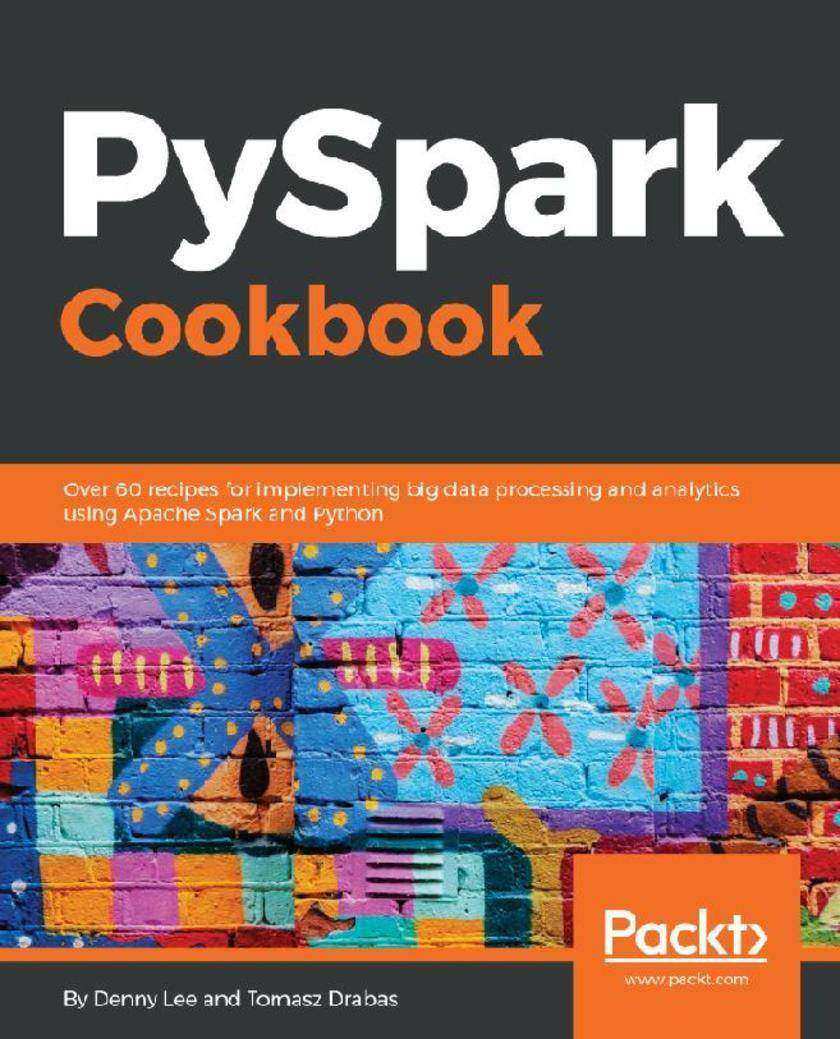
PySpark Cookbook
¥73.02
Combine the power of Apache Spark and Python to build effective big data applications About This Book ? Perform effective data processing, machine learning, and analytics using PySpark ? Overcome challenges in developing and deploying Spark solutions using Python ? Explore recipes for efficiently combining Python and Apache Spark to process data Who This Book Is For The PySpark Cookbook is for you if you are a Python developer looking for hands-on recipes for using the Apache Spark 2.x ecosystem in the best possible way. A thorough understanding of Python (and some familiarity with Spark) will help you get the best out of the book. What You Will Learn ? Configure a local instance of PySpark in a virtual environment ? Install and configure Jupyter in local and multi-node environments ? Create DataFrames from JSON and a dictionary using pyspark.sql ? Explore regression and clustering models available in the ML module ? Use DataFrames to transform data used for modeling ? Connect to PubNub and perform aggregations on streams In Detail Apache Spark is an open source framework for efficient cluster computing with a strong interface for data parallelism and fault tolerance. The PySpark Cookbook presents effective and time-saving recipes for leveraging the power of Python and putting it to use in the Spark ecosystem. You’ll start by learning the Apache Spark architecture and how to set up a Python environment for Spark. You’ll then get familiar with the modules available in PySpark and start using them effortlessly. In addition to this, you’ll discover how to abstract data with RDDs and DataFrames, and understand the streaming capabilities of PySpark. You’ll then move on to using ML and MLlib in order to solve any problems related to the machine learning capabilities of PySpark and use GraphFrames to solve graph-processing problems. Finally, you will explore how to deploy your applications to the cloud using the spark-submit command. By the end of this book, you will be able to use the Python API for Apache Spark to solve any problems associated with building data-intensive applications. Style and approach This book is a rich collection of recipes that will come in handy when you are working with PySpark Addressing your common and not-so-common pain points, this is a book that you must have on the shelf.
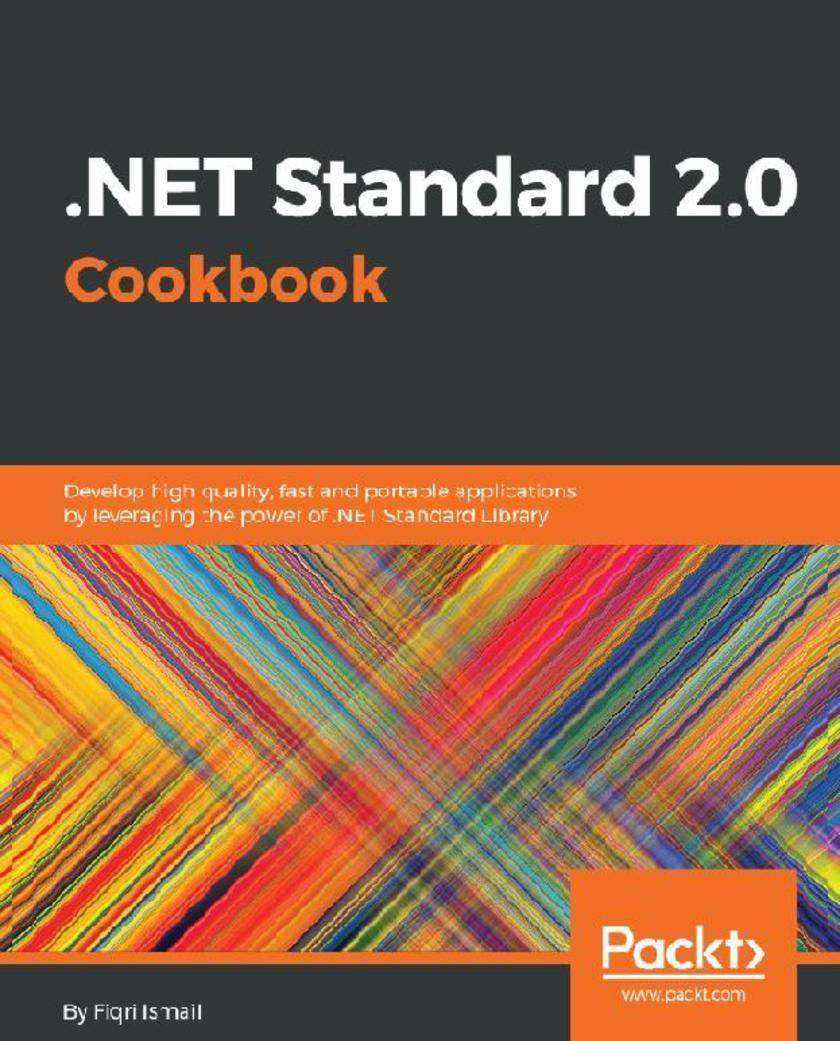
.NET Standard 2.0 Cookbook
¥90.46
Get the most out of .NET framework using standard libraries and create a .NET Standard 2.0 library from scratch About This Book ? Write code once and share within .NET ecosystem in Windows, Linux and macOS ? Give your .NET Libraries a common framework in cloud and on premise with the latest .NET Standard 2.0 ? Build a wide range of applications from Mobile with Xamarin to Web with ASP.NET Who This Book Is For This book is for .NET developers who are looking to build dynamic applications with the latest .NET Standard. C# knowledge is required. What You Will Learn ? Create a .NET Standard 2.0 library ? Use System.IO within the .NET Standard 2.0 ? Make use of your legacy .NET libraries with the new .NET Core standard ? Explore the thread support to create a multithreaded .NET Standard 2.0 library ? Create a .NET Standard 2.0 library and use it with an Android and iOS application ? Implement various Visual Studio 2017 diagnostics and debugging tools ? Create a NuGet Package and submit the package to the NuGet Package Manager ? Use Visual Studio 2017 azure tools to deploy the application to Azure ? Test and deliver a .NET Standard 2.0 library In Detail The .NET Standard is a standard that represents a set of APIs that all .NET platforms have to implement, making it easy for developers to access and use one common library for their development needs. This book begins with a quick refresher, helping you understand the mechanics of the new standard and offering insight into how it works. You’ll explore the core library concepts, such as working with collections, configurations, I/O, security, and multithreading. You’ll explore the iOS and Android libraries of Xamarin and we’ll guide you through creating a .NET Standard 2.0 library, which you’ll use with both Android and iOS applications. In the final chapters, you’ll learn the various debugging and diagnostics tools to deliver quality libraries and create a NuGet package of the .NET Standard 2.0 library. By the end of this book, you’ll be able to expand your current workflow to various .NET flavors and have the essential skills to create a .NET Standard 2.0 library from scratch to package and deliver it to the world. Style and approach A recipe-based approach to help you get the most out of the .NET Standard 2.0 Library that can be implemented to all the .NET Platforms
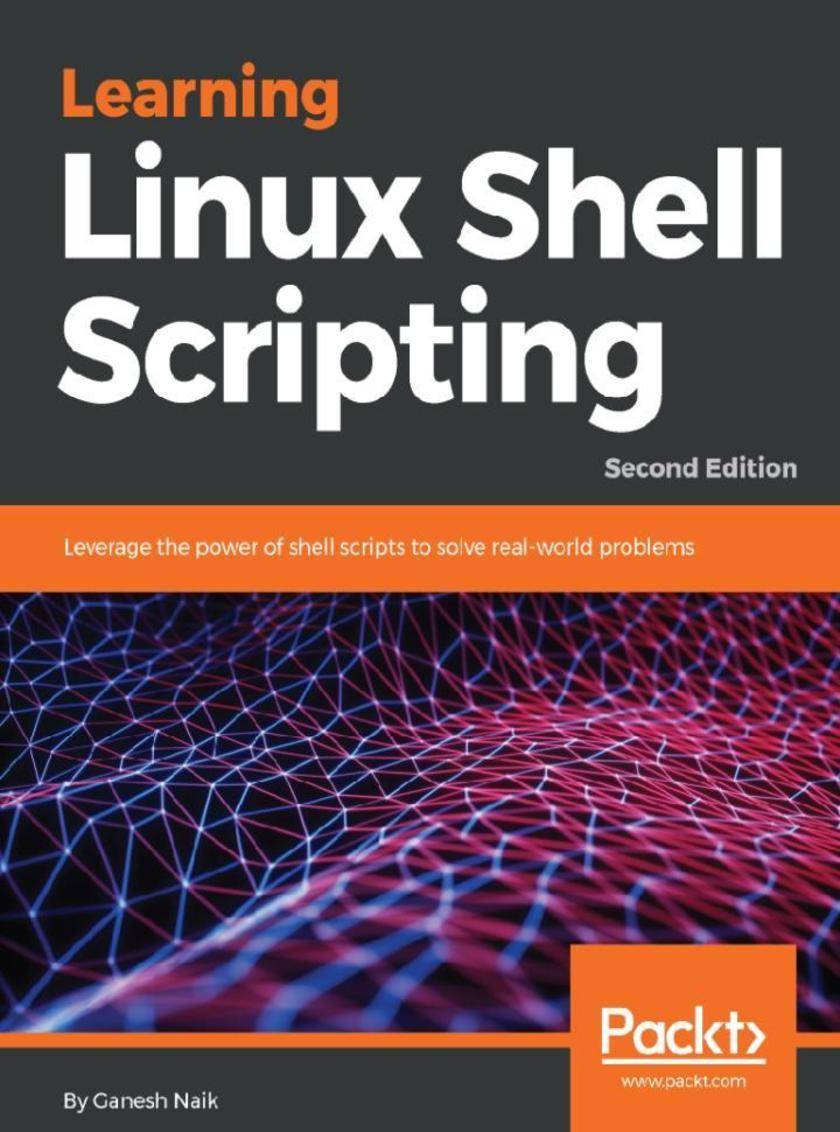
Learning Linux Shell Scripting
¥81.74
Break through the practice of writing tedious code with shell scripts About This Book ? Learn to impeccably build shell scripts and develop advanced applications ? Create smart solutions by writing and debugging scripts ? A step-by-step tutorial to automate routine tasks by developing scripts Who This Book Is For Learning Linux Shell Scripting is ideal for those who are proficient at working with Linux and want to learn about shell scripting to improve their efficiency and practical skills. What You Will Learn ? Familiarize yourself with the various text filtering tools available in Linux ? Understand expressions and variables and how to use them practically ? Automate decision-making and save a lot of time and effort of revisiting code ? Get to grips with advanced functionality such as using traps, dialogs to develop screens & Database administration such as MySQL or Oracle ? Start up a system and customize a Linux system ? Taking backup of local or remote data or important files. ? Use existing other language scripts such as Python, Perl & Ruby in Shell Scripts In Detail Linux is the most powerful and universally adopted OS. Shell is a program that gives the user direct interaction with the operating system. Scripts are collections of commands that are stored in a file. The shell reads this file and acts on commands as if they were typed on the keyboard. Learning Linux Shell Scripting covers Bash, GNU Bourne Again Shell, preparing you to work in the exciting world of Linux shell scripting. CentOS is a popular rpm-based stable and secured Linux distribution. Therefore, we have used CentOS distribution instead of Ubuntu distribution. Linux Shell Scripting is independent of Linux distributions, but we have covered both types of distros. We start with an introduction to the Shell environment and basic commands used. Next, we explore process management in Linux OS, real-world essentials such as debugging and perform Shell arithmetic fluently. You'll then take a step ahead and learn new and advanced topics in Shell scripting, such as decision making, starting up a system, and customizing a Linux environment. You will also learn about grep, stream editor, and AWK, which are very powerful text filters and editors. Finally, you'll get to grips with taking backup, using other language scripts in Shell Scripts as well as automating database administration tasks for MySQL and Oracle. By the end of this book, you will be able to confidently use your own shell scripts in the real world. Style and approach This practical book will go from the very basics of shell scripting to complex, customized automation. The idea behind this book is to be as practical as possible and give you the look and feel of what real-world scripting is like.
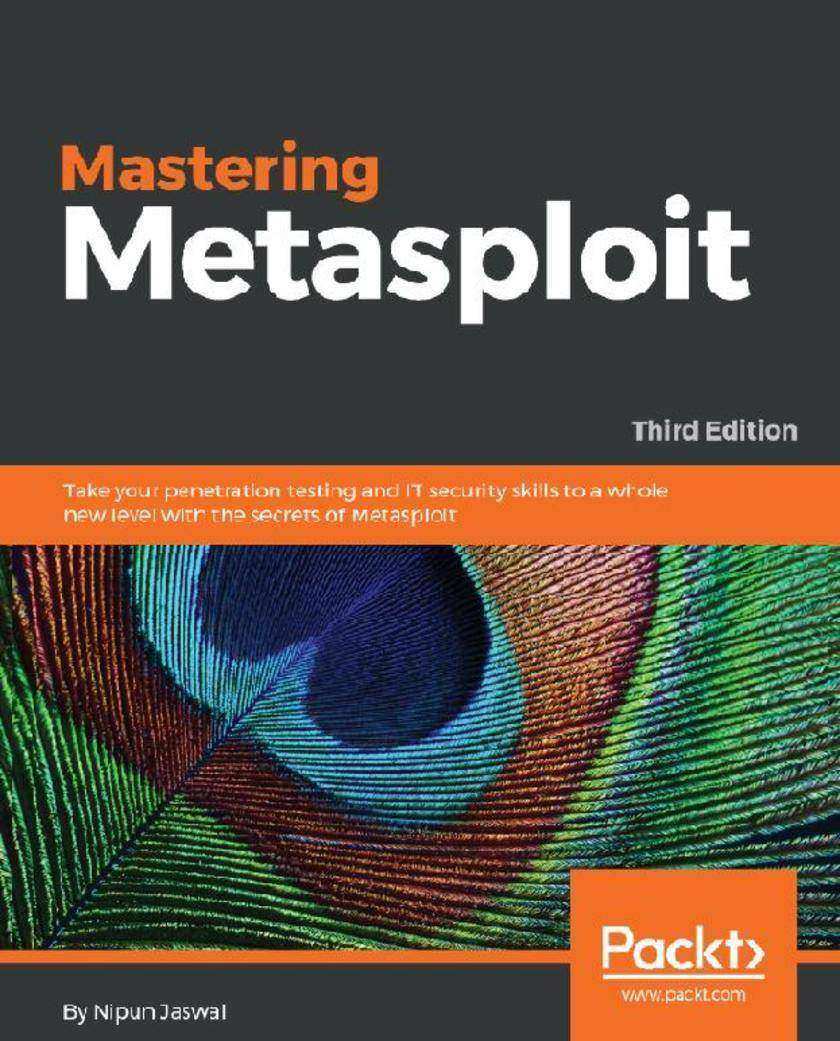
Mastering Metasploit
¥81.74
Discover the next level of network defense with the Metasploit framework About This Book ? Gain the skills to carry out penetration testing in complex and highly-secured environments ? Become a master using the Metasploit framework, develop exploits, and generate modules for a variety of real-world scenarios ? Get this completely updated edition with new useful methods and techniques to make your network robust and resilient Who This Book Is For This book is a hands-on guide to penetration testing using Metasploit and covers its complete development. It shows a number of techniques and methodologies that will help you master the Metasploit framework and explore approaches to carrying out advanced penetration testing in highly secured environments. What You Will Learn ? Develop advanced and sophisticated auxiliary modules ? Port exploits from PERL, Python, and many more programming languages ? Test services such as databases, SCADA, and many more ? Attack the client side with highly advanced techniques ? Test mobile and tablet devices with Metasploit ? Bypass modern protections such as an AntiVirus and IDS with Metasploit ? Simulate attacks on web servers and systems with Armitage GUI ? Script attacks in Armitage using CORTANA scripting In Detail We start by reminding you about the basic functionalities of Metasploit and its use in the most traditional ways. You’ll get to know about the basics of programming Metasploit modules as a refresher and then dive into carrying out exploitation as well building and porting exploits of various kinds in Metasploit. In the next section, you’ll develop the ability to perform testing on various services such as databases, Cloud environment, IoT, mobile, tablets, and similar more services. After this training, we jump into real-world sophisticated scenarios where performing penetration tests are a challenge. With real-life case studies, we take you on a journey through client-side attacks using Metasploit and various scripts built on the Metasploit framework. By the end of the book, you will be trained specifically on time-saving techniques using Metasploit. Style and approach This is a step-by-step guide that provides great Metasploit framework methodologies. All the key concepts are explained details with the help of examples and demonstrations that will help you understand everything you need to know about Metasploit.
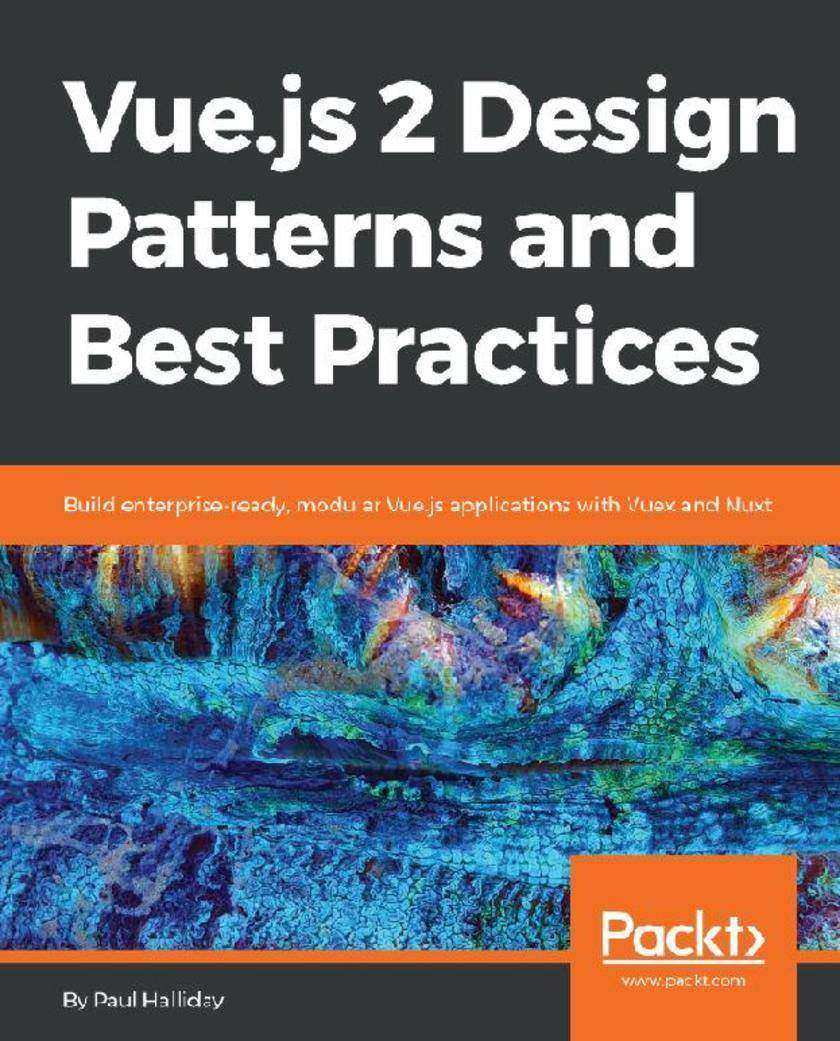
Vue.js 2 Design Patterns and Best Practices
¥81.74
Become an expert Vue developer by understanding the design patterns and component architecture of Vue.js to write clean and maintainable code. About This Book ? Craft highly modular applications by exploring the design patterns and component architecture of Vue.js ? Enforce a Flux-like application architecture in your Vue.js applications with Vuex ? Easy-to-follow examples that can be used to create reusable code and extensible designs Who This Book Is For This book targets Vue Developers who care about framework design principles and utilize commonly found design patterns in developing web applications. What You Will Learn ? Understand the theory and patterns of Vue.js ? Build scalable and modular Vue.js applications ? Take advantage of Vuex for reactive state management. ? Create Single Page Applications with vue-router. ? Use Nuxt for FAST server side rendered Vue applications. ? Convert your application to a Progressive Web App (PWA) and add ServiceWorkers, offline support, and more ? Build your app with Vue.js by following up with best practices and explore the common anti-patterns to avoid In Detail The book starts by comparing Vue.js with other frameworks and setting up the development environment for your application, and gradually move on to writing and styling clean, maintainable, and reusable components that can be used across your application. Further on, you'll look at common UI patterns, Vue form submission, and various modifiers such as lazy binding, number typecasting, and string trimming to create better UIs. You will also explore best practices for integrating HTTP into Vue.js applications to create an application with dynamic data. Routing is a vitally important part of any SPA, so you will focus on the Vue router and explore routing a user between multiple pages. Next, you'll also explore state management with Vuex, write testable code for your application, and create performant, server-side rendered applications with Nuxt. Towards the end, we'll look at common antipatterns to avoid, to save you from a lot of trial and error and development headaches. By the end of this book, you'll be well on your way to becoming an expert Vue developer who can leverage design patterns to efficiently architect the design of your application and write clean and maintainable code. Style and approach This easy-to-follow practical guide will help you develop efficient Vue.js apps by following best practices and using common design patterns.
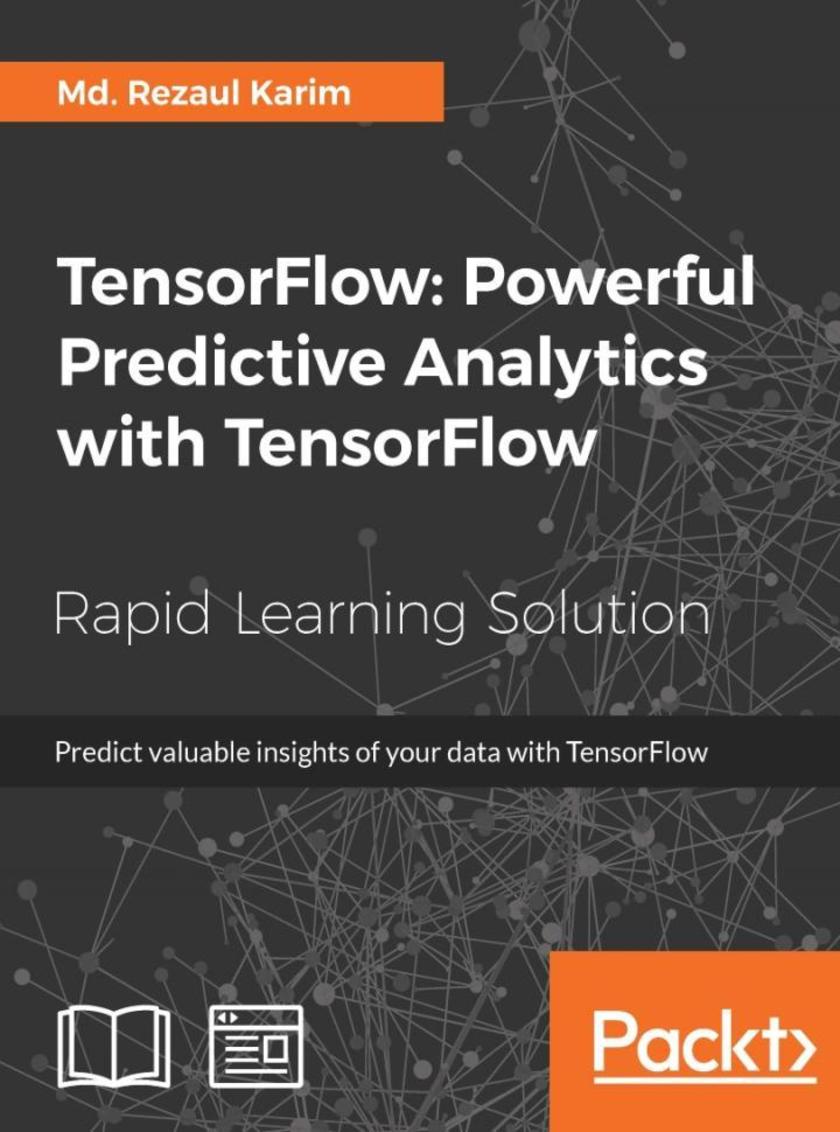
TensorFlow: Powerful Predictive Analytics with TensorFlow
¥73.02
Learn how to solve real life problems using different methods like logic regression, random forests and SVM’s with TensorFlow. About This Book ? Understand predictive analytics along with its challenges and best practices ? Embedded with assessments that will help you revise the concepts you have learned in this book Who This Book Is For This book is aimed at developers, data analysts, machine learning practitioners, and deep learning enthusiasts who want to build powerful, robust, and accurate predictive models with the power of TensorFlow. What You Will Learn ? Learn TensorFlow features in a real-life problem, followed by detailed TensorFlow installation and configuration ? Explore computation graphs, data, and programming models also get an insight into an example of implementing linear regression model for predictive analytics ? Solve the Titanic survival problem using logistic regression, random forests, and SVMs for predictive analytics ? Dig deeper into predictive analytics and find out how to take advantage of it to cluster records belonging to the certain group or class for a dataset of unsupervised observations ? Learn several examples of how to apply reinforcement learning algorithms for developing predictive models on real-life datasets In Detail Predictive analytics discovers hidden patterns from structured and unstructured data for automated decision making in business intelligence. Predictive decisions are becoming a huge trend worldwide, catering to wide industry sectors by predicting which decisions are more likely to give maximum results. TensorFlow, Google’s brainchild, is immensely popular and extensively used for predictive analysis. This book is a quick learning guide on all the three types of machine learning, that is, supervised, unsupervised, and reinforcement learning with TensorFlow. This book will teach you predictive analytics for high-dimensional and sequence data. In particular, you will learn the linear regression model for regression analysis. You will also learn how to use regression for predicting continuous values. You will learn supervised learning algorithms for predictive analytics. You will explore unsupervised learning and clustering using K-meansYou will then learn how to predict neighborhoods using K-means, and then, see another example of clustering audio clips based on their audio features. This book is ideal for developers, data analysts, machine learning practitioners, and deep learning enthusiasts who want to build powerful, robust, and accurate predictive models with the power of TensorFlow. This book is embedded with useful assessments that will help you revise the concepts you have learned in this book. Style and approach This is a fast-paced guide that provides a quick learning solution to all the three types of machine learning, that is, supervised, unsupervised, and reinforcement learning with TensorFlow Note: This book is a blend of text and quizzes, all packaged up keeping your journey in mind. It includes content from the following Packt product: ? Predictive Analytics with TensorFlow by Md. Rezaul Karim
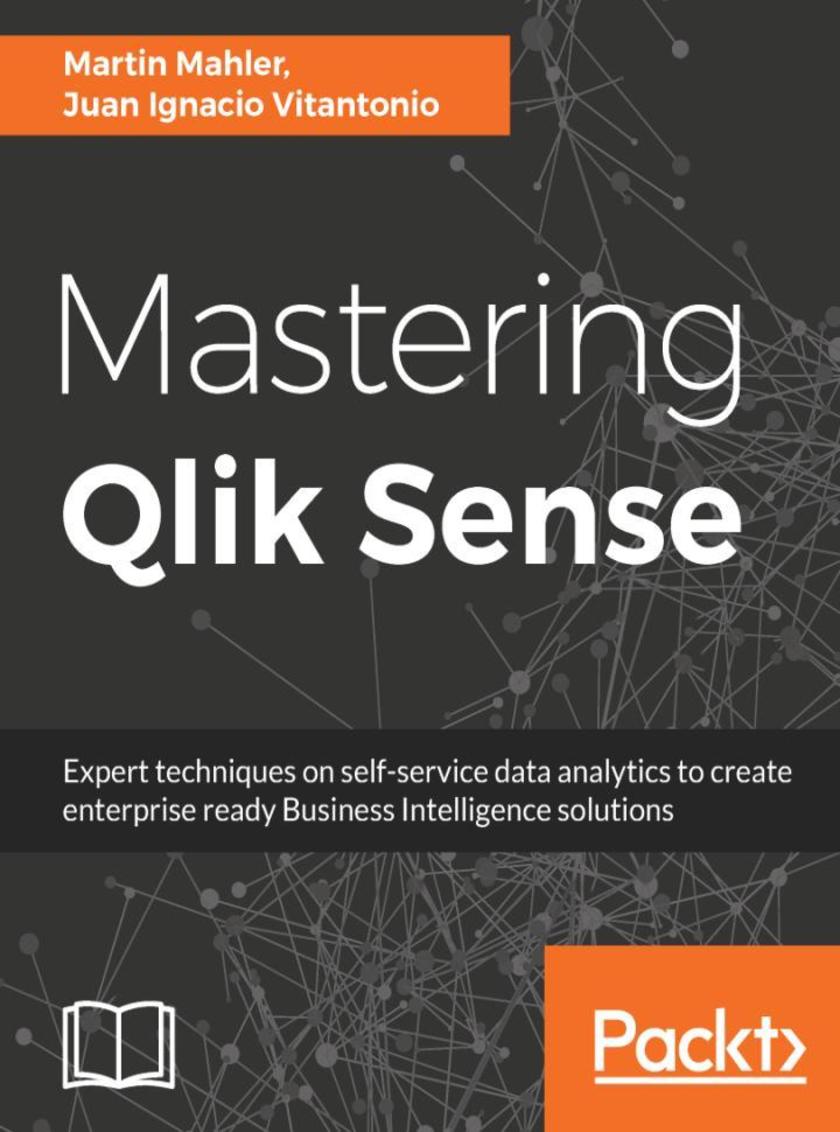
Mastering Qlik Sense
¥90.46
Master the capabilities of Qlik Sense to design and deploy solutions that address all the Business Intelligence needs of your organization About This Book ? Create compelling dashboards and visualizations with your data by leveraging Qlik Sense's self-service model ? Perform data loading and model efficient solutions with faster performance and better governance ? Master Qlik Sense’s APIs and develop powerful mashups and fantastic extensions for visualizations and other components that run across all platforms Who This Book Is For This book is for Business Intelligence professionals and Data Analysts who want to become experts in using Qlik Sense. If you have extensively used QlikView in the past and are looking to transition to Qlik Sense, this book will also help you. A fundamental understanding of how Qlik Sense works and its features is all you need to get started with this book. What You Will Learn ? Understand the importance of self-service analytics and the IKEA-effect ? Explore all the available data modeling techniques and create efficient and optimized data models ? Master security rules and translate permission requirements into security rule logic ? Familiarize yourself with different types of Master Key Item(MKI) and know how and when to use MKI. ? Script and write sophisticated ETL code within Qlik Sense to facilitate all data modeling and data loading techniques ? Get an extensive overview of which APIs are available in Qlik Sense and how to take advantage of a technology with an API ? Develop basic mashup HTML pages and deploy successful mashup projects In Detail Qlik Sense is a powerful, self-servicing Business Intelligence tool for data discovery, analytics and visualization. It allows you to create personalized Business Intelligence solutions from raw data and get actionable insights from it. This book is your one-stop guide to mastering Qlik Sense, catering to all your organizational BI needs. You'll see how you can seamlessly navigate through tons of data from multiple sources and take advantage of the various APIs available in Qlik and its components for guided analytics. You'll also learn how to embed visualizations into your existing BI solutions and extend the capabilities of Qlik Sense to create new visualizations and dashboards that work across all platforms. We also cover other advanced concepts such as porting your Qlik View applications to Qlik Sense,and working with Qlik Cloud. Finally, you'll implement enterprise-wide security and access control for resources and data sources through practical examples. With the knowledge gained from this book, you'll have become the go-to expert in your organization when it comes to designing BI solutions using Qlik Sense. Style and approach This book provides in-depth knowledge on complex visualization processes. This guide will take you straight to complex implementation techniques. While covering the concepts, the use cases will help you understand how they work and how to utilize them.
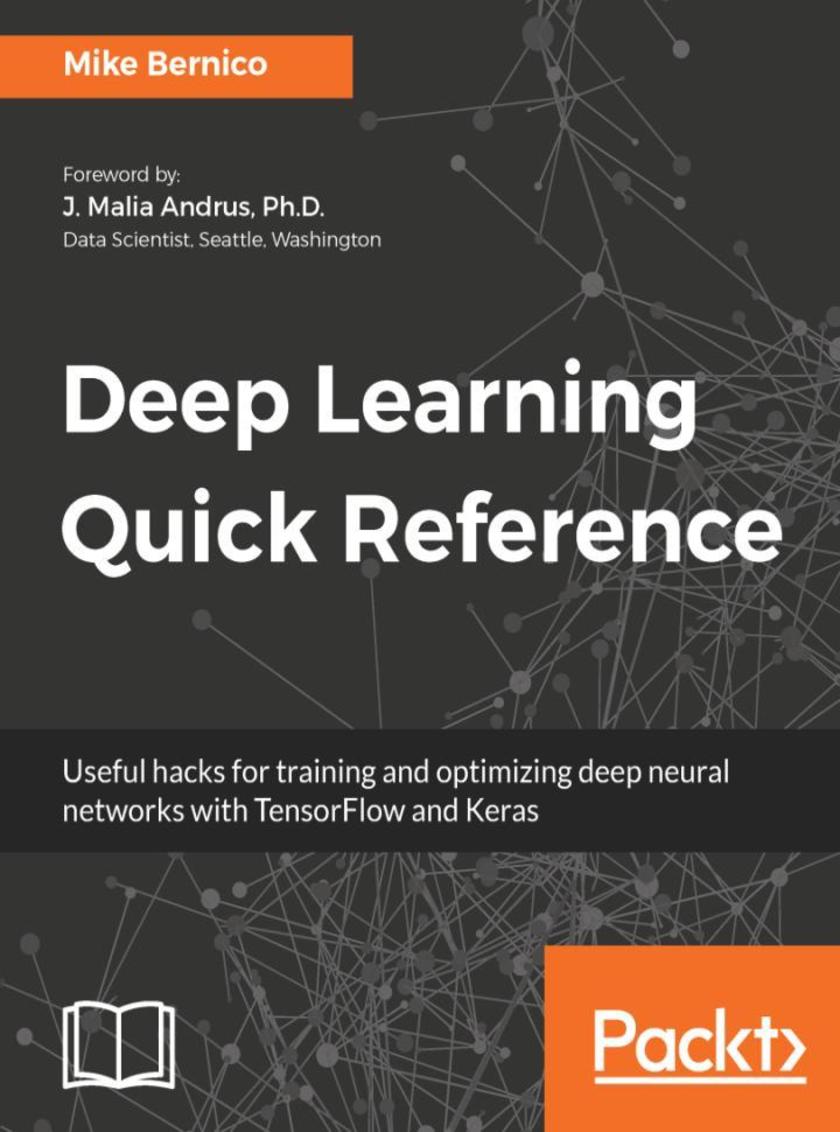
Deep Learning Quick Reference
¥73.02
Dive deeper into neural networks and get your models trained, optimized with this quick reference guide About This Book ? A quick reference to all important deep learning concepts and their implementations ? Essential tips, tricks, and hacks to train a variety of deep learning models such as CNNs, RNNs, LSTMs, and more ? Supplemented with essential mathematics and theory, every chapter provides best practices and safe choices for training and fine-tuning your models in Keras and Tensorflow. Who This Book Is For If you are a Data Scientist or a Machine Learning expert, then this book is a very useful read in training your advanced machine learning and deep learning models. You can also refer this book if you are stuck in-between the neural network modeling and need immediate assistance in getting accomplishing the task smoothly. Some prior knowledge of Python and tight hold on the basics of machine learning is required. What You Will Learn ? Solve regression and classification challenges with TensorFlow and Keras ? Learn to use Tensor Board for monitoring neural networks and its training ? Optimize hyperparameters and safe choices/best practices ? Build CNN's, RNN's, and LSTM's and using word embedding from scratch ? Build and train seq2seq models for machine translation and chat applications. ? Understanding Deep Q networks and how to use one to solve an autonomous agent problem. ? Explore Deep Q Network and address autonomous agent challenges. In Detail Deep learning has become an essential necessity to enter the world of artificial intelligence. With this book deep learning techniques will become more accessible, practical, and relevant to practicing data scientists. It moves deep learning from academia to the real world through practical examples. You will learn how Tensor Board is used to monitor the training of deep neural networks and solve binary classification problems using deep learning. Readers will then learn to optimize hyperparameters in their deep learning models. The book then takes the readers through the practical implementation of training CNN's, RNN's, and LSTM's with word embeddings and seq2seq models from scratch. Later the book explores advanced topics such as Deep Q Network to solve an autonomous agent problem and how to use two adversarial networks to generate artificial images that appear real. For implementation purposes, we look at popular Python-based deep learning frameworks such as Keras and Tensorflow, Each chapter provides best practices and safe choices to help readers make the right decision while training deep neural networks. By the end of this book, you will be able to solve real-world problems quickly with deep neural networks. Style and approach An easy-to-follow, step-by-step guide to help you get to grips with real-world applications of training deep neural networks.
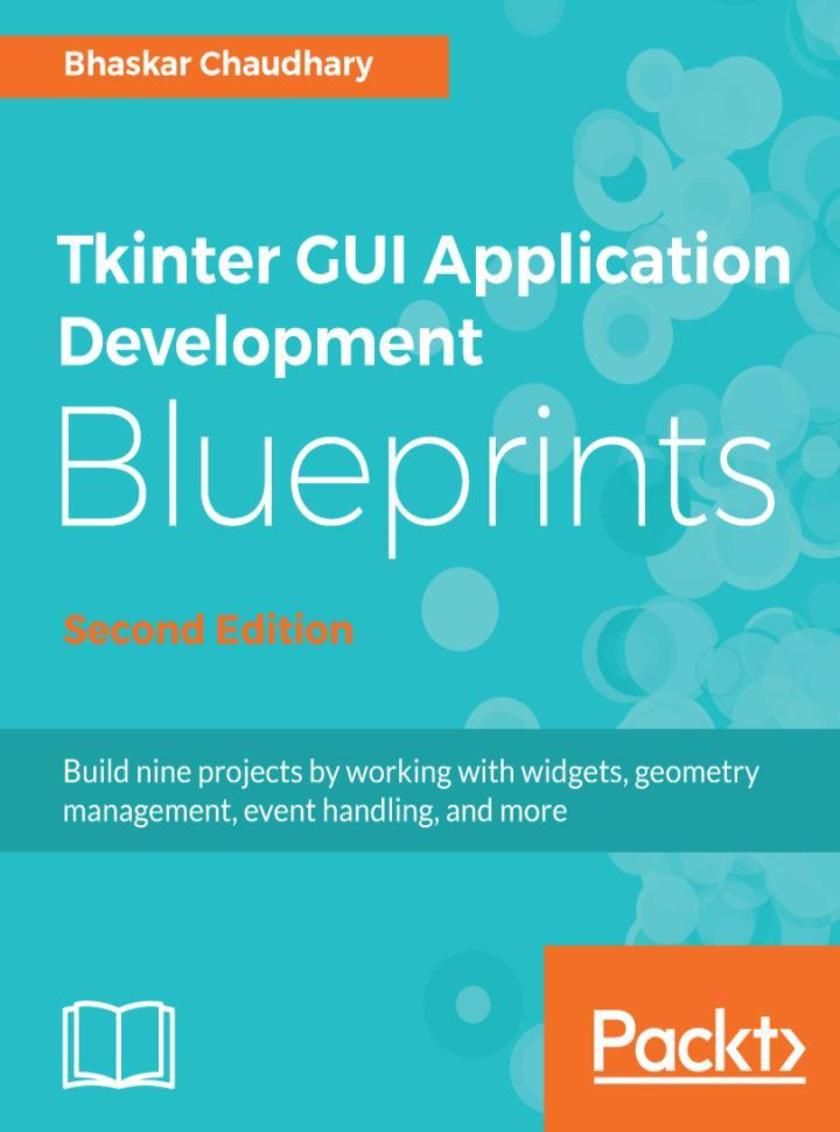
Tkinter GUI Application Development Blueprints - Second Edition
¥90.46
Geometry Management, Event Handling, and more About This Book ? A Practical, guide to learn the application of Python and GUI programming with tkinter ? Create multiple cross-platform real-world projects by integrating host of third party libraries and tools ? Learn to build beautiful and highly interactive user interfaces, targeting multiple devices. Who This Book Is For This book is for a beginner to intermediate-level Pythonists who want to build modern, cross-platform GUI applications with the amazingly powerful Tkinter. Prior knowledge of Tkinter is required. What You Will Learn ? A Practical, guide to help you learn the application of Python and GUI programming with Tkinter ? Create multiple, cross-platform, real-world projects by integrating a host of third-party libraries and tools ? Learn to build beautiful and highly interactive user interfaces, targeting multiple devices. In Detail Tkinter is the built-in GUI package that comes with standard Python distributions. It is a cross-platform package, which means you build once and deploy everywhere. It is simple to use and intuitive in nature, making it suitable for programmers and non-programmers alike. This book will help you master the art of GUI programming. It delivers the bigger picture of GUI programming by building real-world, productive, and fun applications such as a text editor, drum machine, game of chess, audio player, drawing application, piano tutor, chat application, screen saver, port scanner, and much more. In every project, you will build on the skills acquired in the previous project and gain more expertise. You will learn to write multithreaded programs, network programs, database-driven programs, asyncio based programming and more. You will also get to know the modern best practices involved in writing GUI apps. With its rich source of sample code, you can build upon the knowledge gained with this book and use it in your own projects in the discipline of your choice. Style and approach An easy-to-follow guide, full of hands-on examples of real-world GUI programs. The first chapter is a must-read as it explains most of the things you need to get started with writing GUI programs with Tkinter. Each subsequent chapter is a stand-alone project that discusses some aspects of GUI programming in detail. These chapters can be read sequentially or randomly, depending on the reader's experience with Python.




 购物车
购物车 个人中心
个人中心



